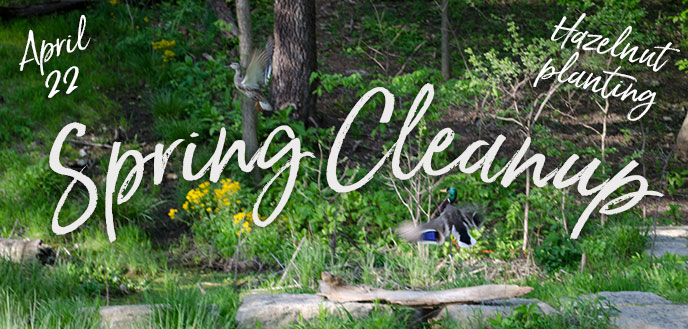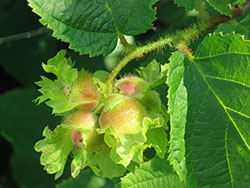- Created: 02 April 2017
- Updated: 25 May 2017
- Published: 22 April 2017
- Hits: 5164
Many neighbors helped clean up and plant on Saturday, April 22

- 26 more hazelnut shrubs were planted Sunday 5/7 along the old roadbed slope near the Coleman Highlands Spring area.
- 172 native wildflowers and grasses were planted on Wednesday 5/24 in the same area.
- Red Columbine to provide nectar for early pollinators and hummingbirds
- Purple Milkweed for the spring migrating Monarchs to lay their eggs on
- Sky Blue Aster for late blooming nectar (for the Monarchs migrating back south)
- and Little Bluestem as a border and interspersed with the wildflowers for year round interest.
 Hazel-whats?
Hazel-whats?
Charlie DeLong, son of volunteer park naturalist Chris DeLong, is undertaking the planting of hazelnut shrubs and pollinator friendly plants along the "old roadbed" between Karnes and the Coleman Highland Spring as his Eagle Scout project. His main work day for the planting of these shrubs was the afternoon of May 7th but we got started with a few of them on 4/22. The wildflowers went in Wednesday May 24. (It's actually an old rail bed. We found an 1877 map that shows the short lived K.C.M.&M. line going through there.)
A Missouri native plant, American Hazelnut, Corylus americana, was chosen for its suitablity to the site, wildlife value and beauty. Yes, the nuts are edible, although they are smaller than commercial hazelnuts and likely to be fewer in number. The plants for the sunnier east portion of the old roadbed slope include little bluestem, columbine, purple milkweed and sky blue aster. These were chosen to supply both larval food to early monarch butterflies heading north, and nectar to later monarch butterflies heading south.

